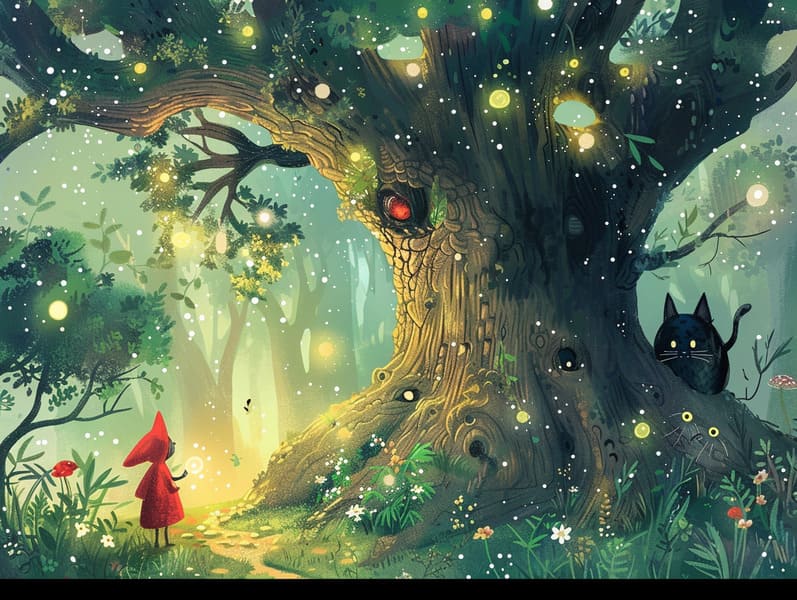The Creation of Traditional Fairy Tales and Its Unfading Grandeur.
The Creation of Traditional Fairy Tales and Its Unfading Grandeur.
Blog Article

Historical fairy tales have long histories. These narratives have been whispered from one generation to the next millennia before they were ever put on paper. They arose from a variety of societies, including African traditions. They were initially passed along among grown-ups, often carrying themes and messages aligned with the societal norms and beliefs of the time.
The famous Grimm duo, Jacob and Wilhelm, were among the first to compile and publish many of these beloved fairy tales. Their anthology, "Grimm's Children's Stories," included narratives like "Ashenputtel," "Hansel and Gretel," and "Snow-White and Rose-Red," which have since become staples in the world of classic fairy tales. Similarly, Andersen's imaginative tales, such as "The Sea Maid," and "The Story of the Ugly Duckling," have touched hearts worldwide, securing their place in the pantheon of timeless fairy tales.
Despite their ancient origins, these tales remain as pertinent as ever, especially as nighttime stories for kids. These fantastical tales are now available in numerous formats, including vibrantly illustrated books, whimsical animations, and online storybooks.
Their persistent charm can be connected to several delightful features:
Valuable Lessons: Old fairy tales often illustrate important moral lessons. Stories like "The Shepherd Boy and the Wolf" teach the benefit of being truthful, while "The Race of the Tortoise and the Hare" highlight the values of resolve and meekness. These tales offer young ones clear distinctions between correct and incorrect, shaping their moral compass in a soft yet impactful way.
Kindness and Comprehension: Old fairy tales frequently showcase characters facing challenges and problems, motivating young listeners to understand with their struggles and boost their triumphs. For instance, "Beauty's Beast" teaches us the necessity of looking beyond appearances to acknowledge the true being of a character, enhancing awareness and understanding.
Cultural Understanding: Many timeless fairy tales are rooted in the cultural contexts from which they developed. Understanding these fairy tales can provide enlightening views into different historical contexts, enhancing a sense of cultural appreciation and comprehension.
Fantasy and Imagination: The fantastical elements in classic fairy tales—magical beings—motivate children’s visions. These narratives move readers to supernatural realms, enhancing fantasy ideas and a sense of mystery that continues a lifetime.
Old fairy tales are not only alluring but also illuminating. They provide captivating tools in nurturing various thinking and feeling skills in kids. When ancient fairy tales are narrated, they strengthen language acquisition by bringing new language and elaborate sentence structures. This practice also improves auditory skills and attention, as children listen intently, expectant to see what happens next.
Furthermore, discussing the themes and characters of fairy tales can enhance critical thinking and intellectual skills. The young are taught to detect patterns, guess what will happen, and realize cause and effect. These deliberations also encourage the young utter their thoughts and feelings, boosting their emotional intelligence.
In today’s modern era, the prevalence of digital fairy tales has made these tales more within reach than ever. Internet resources and mobile apps supply wide arrays of popular fairy tales that can be accessed or listened via anytime, anywhere. Fairy tales spoken are particularly popular, presenting an entertaining method for children to immerse in these fantastical tales. Narrated books and read-to-me videos take characters and settings to life, often joined by delightful soundtracks and musical scores that enrich the narrative experience.
The enduring charm of classic fairy tales lies in their ability to evolve to today's world while keeping their central values. Contemporary takes of these fairy tales often showcase more multicultural figures and modern settings, making them relatable to today’s audience. However, the basic principles of daring, understanding, and justness remain unchanged, continuing to appeal to kids of all ages.
Ancient fairy tales also offer a sense of peace and predictability. They impart upon a well-structured narrative with a apparent beginning, middle, and end, often concluding with the finalization of conflicts and the triumph of morality over immorality. This certainty can be placating for the young, introducing a sense of solidity in an unstable world.
Traditional fairy tales continue to allure and instruct new generations, maintaining their beauty and value in modern society. As bedtime stories for kids, they extend a perfect blend of fantasy and learning, facilitating moral values, empathy, and creativity. The abundance of online fairy tales and the favor of fairy tales spoken ensure that these old stories remain accessible to new generations.
By upholding and distributing these tales, we continue to recognize the rich tapestry of tales and cultural heritage. Whether you are seeing a artistically illustrated book, delving into a web-based library, or hearing an audiobook, the magic of traditional fairy tales is always within reach. These tales remind us of the undying magic of narratives and its ability to draw us together across epochs and places.
Regardless if you are reading a richly illustrated book, delving into a online collection, or hearing an audio story, the delight of bedtime fairy tales is always within reach.
These tales remind us of the unfading ability of storytelling and this site its ability to link us across time and space, forging a link that delights and instructs alike.